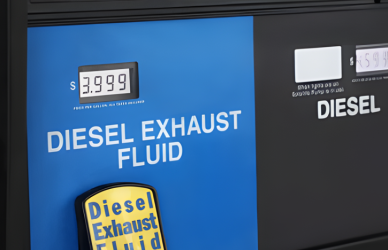In today’s interconnected world, a minor disruption in one part of the supply chain can create havoc for the entire system. This delicate balance is currently under threat as the Panama Canal, a vital artery for global trade, faces severe congestion.
To combat a drought-induced drop in water levels at one of the canal’s locks, the Panama Canal Authority has imposed restrictions on the number of ships passing through.
This measure has inadvertently led to a backlog of ships either forced to wait or take a longer alternate route.
The implications of this congestion extend far beyond the canal itself, with potential slowdowns and bottlenecks looming for US trucking. With the smooth flow of goods and commerce at stake, it is crucial to address this crisis promptly and effectively.
“Our supply chain is very delicately balanced,” said Danny Ramon, intelligence and response manager at Overhaul. “If one thing goes out of whack a little bit, it can throw the whole system into chaos. We saw that with the Ever Given in the Suez Canal a couple of years ago. That’s basically the same thing that’s going to be going on here.”
Did you know that nearly 3% of all global maritime trade goes through the Canal Authority? The United States takes the lead, with a whopping 72.1% of cargo passing through the canal either coming from or going to a U.S. port. In 2022 alone, this amounted to a staggering 215.9 million long tons. The majority of this traffic originates from ports on the East Coast and Gulf of Mexico.
“If we block up a major artery of international freight commerce, it’s going to have downstream effects on almost every link of the supply chain,” Ramon said. “When we look specifically at U.S. trucking, once there’s a choke point there at the canal, it means that choke points are just going to end up moving down the line.”
TD Cowen, a leading investment banking company, has been closely monitoring the drought conditions and their effect on the canal and supply chain operations. In a recent report, they highlight the significant disruptions caused by this situation, including diversions and the impact on ocean spot pricing.
“While shipping data indicates a pileup of ships waiting at the ends of the waterway, reports suggest that containerships have not been materially impacted in the U.S. East Coast and Gulf ports,” TD Cowen analyst Jason Seidl wrote in the report. “Potential implications to ocean container rates will hinge on weather and reservoir replenishment, though ocean carriers are able to divert this bottleneck (via the Suez Canal) at the expense of an extra week of travel time.”
According to a report by FourKites, the congestion in the canal could result in decreased delivery volume to East Coast ports. This includes locations like Savannah, GA, Charleston, SC, New York, New Jersey, and Baltimore.
“Our belief is that the port throughput on the West Coast is in a really good state right now because overall demand is soft. So, if this were to happen a year ago, then this would just be exacerbated,” said Glenn Koepke, general manager of network collaboration at FourKites.
Koepke anticipates a rise in the number of shippers seeking alternative routes for their cargo due to increasing wait times at the canal. This will result in the use of trucks for urgent cargo and rail for all other shipments.
“There are no real issues for the container vessels,” said Christian Sur, executive vice president of ocean freight and contract logistics at Unique Logistics International. “But since the canal authority has said they’re going to be operating under this limited draft and a number of transfer dates, in another 10 months there could potentially be some conditions and delays.”
Sur remains unconvinced that disruptions will have a significant long-term impact due to the extended transit times.
“There’s not that much volume moving, and there are other ways to get to the East Coast,” Sur said. “The Panama Canal is the optimal option.”
Source: Transport Topics











